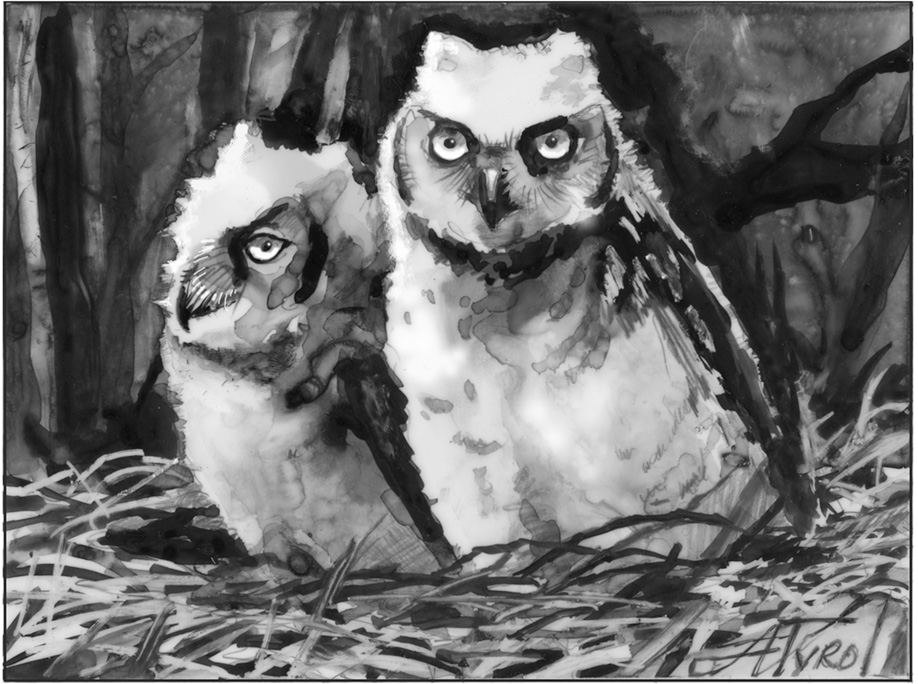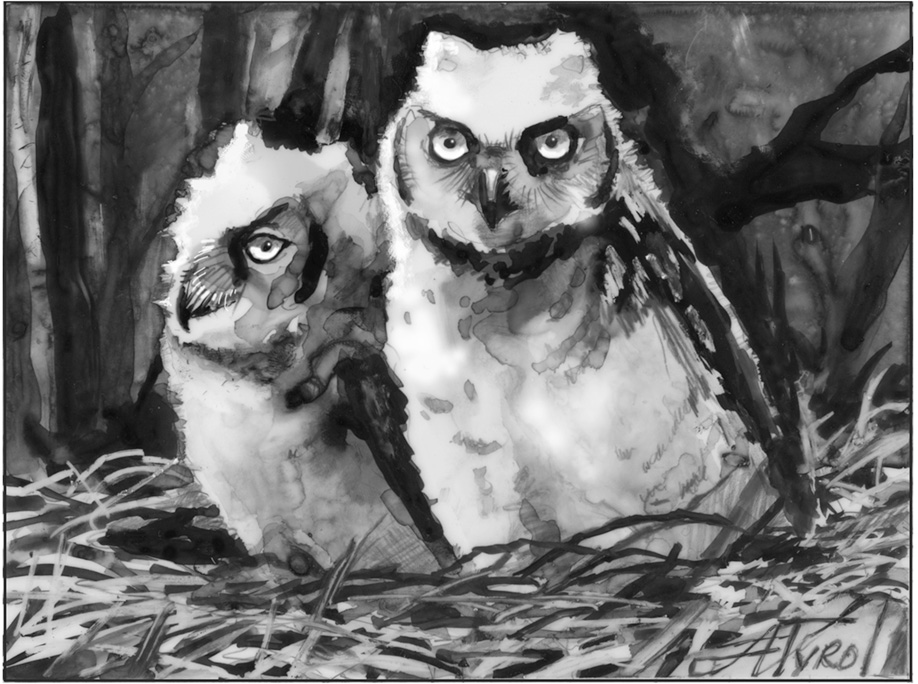
by Anna Morris
QUECHEE — Among the very earliest signs of spring are the strange caterwauls of the barred owls that haunt our woods: “Who cooks for you? Who cooks for you all?” Their hooted conversations, thrown back and forth through forests all over New England, signal the territory disputes, nest-site advertisement, and pair bonding that begin the breeding season. That these predators of the nighttime are especially vocal now, with snow still covering the ground, seems odd. But owls do everything on their own timeline.
Many owl species are most active either at night or just around dawn and dusk and have adaptations that help them to see in low light conditions. With small rodents burrowed in tunnels under the snowpack, owls in late winter and early spring also use their tremendously sensitive ears to locate prey. This gives them not only a hunting advantage over other birds of prey at this time of year, but the ability to start raising a family before the competition for hunting grounds gets steep.
Establishing those hunting grounds is crucial for an owl to ensure their pantry will be well-stocked for the arrival of hungry young mouths. Territorial boundaries are decided with what amount to shouting matches of hoots and wails, until one party decides to move on. The calls also function to reconnect members of a mated pair, who likely spent the winter in separate areas. Getting started with this task early means that those owl species that do not build their own nests – notably great horned owls – get the first pick of last year’s constructions by other birds such as common ravens or red-tailed hawks. It is not uncommon for a raven family to return to an old nest in spring, only to find large, talon-sporting squatters inside.
By the end of March, most owls in New England have eggs in the nest. Depending on the species, incubation takes four or five weeks, and is mostly done by the female. The male’s role is to supply her with food, to stock up for when the eggs hatch, and to help defend the nest from predators. Though not much will tangle with an adult owl, the eggs and hatchlings are at risk from countless dangers. Weasels and raccoons can climb into the nest to eat the eggs, and a young owl tumbled from the nest may fall prey to a bobcat or a coyote.
An owl’s growth is astonishingly fast, and hatchlings reach their parents’ size in a matter of weeks. A freshly laid great horned owl egg weighs about 50 grams, hatches after five weeks, and the owlet puts on about 30 grams each day for the next four weeks. It will fledge, or leave the nest, another two weeks after that, at which point it weighs about 1,100 grams, but cannot yet fly. In this “brancher” stage, the young owl may look clumsy or helpless to the human observer, but it will continue to receive food and protection from its parents.
It will take its first real flights in another week or two, so that at the tender age of eight weeks, the young owl is well on its way to independence. But even after the young are all able to fly, their parents remain in the area taking care of them, dropping off prey items, and will not actively chase their young off to establish their own territories until late August or September.
Smaller species of owls mature even more quickly. The northern saw-whet owl hatches from an 8-gram egg, incubated for four weeks, and grows into an 80-gram, fully-feathered flyer just over four weeks after that. (This does mean that a two-day-old great horned owl is already larger than a northern saw-what owl will ever grow!)
It is a special treat to catch a glimpse of an owl family out and about in spring. The young ones, even when roughly the same size as their parents, are identifiable by that halo of downy fuzz they may still have, and a wide, curious stare as they learn about the woodland world under the watchful guidance of their parents.
[Anna Morris is an environmental educator at the Vermont Institute of Natural Science. Illustration by Adelaide Murphy Tyrol.]






